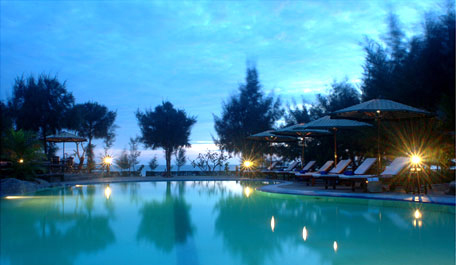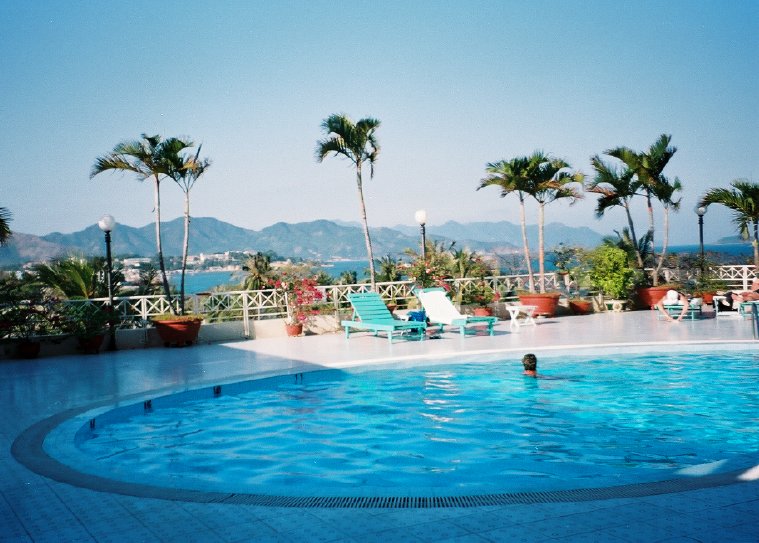INDOCHINA INTERNATIONAL CONSULTING CO., LTD
HO Add: 62L/36 Nguyên Hồng, Ward 11, Bình Thạnh District, HCMC - Vietnam
Biz Office Add: #48 Road No 11, Quarter 6, Hiệp Binh Chánh Ward, Thủ Đức, HCMC - Vietnam
®Source: http://viipip.com should be clearly quoted for any use of information extracted from our website.
Publication permit No: 60/GP-TTĐT , April 05, 2010.

Under the plan with a vision to 2050 prepared by the Ministry of Construction, these towns are to obtain adequate, modern infrastructure and a healthy living environment. The plan will help to reduce the urban-rural gap in living standards, protect the environment and use natural resources in a manner that will ensure sustainable urban development. The plan also specifies socio-economic growth, architecture orientations and infrastructure development.
Major cities such as Hanoi, HCMC, Can Tho, Danang, Haiphong, Vinh, Hue and Quy Nhon will have satellite cities to compensate for accelerated population growth as well as to limit the increase in manufacturing plants in inner-city areas. The plan also requires each city to have a particular design and architecture depending on its economy, culture, history and technological development.
The Ministry of Construction and relevant agencies will oversee the architecture of Hanoi and HCMC. The architecture of historic cities like Hue, Hoi An, Dalat and Sapa will be protected and embellished to make them unique.
From now to 2015, Vietnam will give priority to developing economic zones and metropolises. However, some experts have expressed concern about the low urban management capacity in Vietnam given this huge urban development master plan.
* In a related development, a master plan for developing the HCMC zone, announced early this month, will help the city and seven other southern provinces address economic and urban development issues, Deputy Construction Minister Tran Ngoc Chinh said.
The zone will encompass HCMC, Binh Duong, Binh Phuoc, Ba Ria-Vung Tau, Tay Ninh, Dong Nai, Long An and Tien Giang.
In 2005, the Southern Sub-Institute of Urban and Rural Planning proposed establishing an economic zone in which HCMC would serve as the nucleus surrounded by independent satellite areas and areas connecting the city with neighboring provinces.The connection to the southeast is Ba Ria-Vung Tau Province; to the east, Dong Nai Province’s Long Khanh and Nhon Trach Districts; to the north, Binh Phuoc Province’s Chon Thanh District; to the northwest, Tay Ninh Province’s Trang Bang District; and to the southwest, Tien Giang Province’s My Tho City.
The HCMC zone will have advantages to develop trade links with neighboring Cambodia and Thailand and those in the Mekong Sub-region via the Trans-Asia route since it consists of some provinces that border these countries.
However, many urban planning experts said that in order to develop the zone, which will have a population of 20-22 million by 2010, a long list of concerns would have to be addressed. Those concerns include fast urbanization, lack of infrastructure, the widening gap of living standards between the inner cities and the suburbs, the disconnection between ports, pollution and gridlock traffic.
- FDI capital continues to pour into Vietnam (6/11/2025 1:20:33 PM)
- Thanh Hoa receives good news: Preparing to have an additional industrial park of up to 470 hectares, creating jobs for nearly 30,000 people (6/11/2025 1:15:09 PM)
- Industrial Park Real Estate: Waiting for the New Generation of FDI (6/11/2025 1:10:15 PM)
- A wealthy Vietnamese city will have two special economic zones after the merger (6/11/2025 1:04:42 PM)
- 30 billion USD capital FDI in Việt Nam by 2025, a series of "ông big" races to expand the land fund (6/11/2025 12:55:26 PM)
- the 2nd largest city in the North will start construction on an international economic zone (6/11/2025 12:50:20 PM)
- Japanese giant Sumitomo continues to want to build an industrial park in the countrys fourth smallest province. (6/11/2025 12:40:45 PM)
- 3 foreign corporations want to invest billions of dollars in Ba Ria - Vung Tau (6/11/2025 12:34:30 PM)
- Lotte Group member starts construction of nearly 1,000 billion VND logistics center in the province with the most industrial parks in Vietnam (6/11/2025 12:33:26 PM)
- Forming a regional center for manufacturing spare parts and components (6/11/2025 12:24:08 PM)
- Vietnams first wafer factory is about to start construction (6/11/2025 12:19:09 PM)
- Dong Nai attracts foreign investors (6/11/2025 12:13:27 PM)
- Tay Ninhs largest industrial park welcomes a $150 million high-end knitted fabric factory project (6/11/2025 12:11:00 PM)
- (6/11/2025 12:09:10 PM)
- Vietnam will become a destination for Chinese investors in the future (11/6/2023 1:03:19 PM)

- FDI capital continues to pour into Vietnam
- Thanh Hoa receives good news: Preparing to have an additional industrial park of up to 470 hectares, creating jobs for nearly 30,000 people
- Industrial Park Real Estate: Waiting for the New Generation of FDI
- A wealthy Vietnamese city will have two special economic zones after the merger
- 30 billion USD capital FDI in Việt Nam by 2025, a series of "ông big" races to expand the land fund










 ADB: Vietnam’s 2009 GDP growth to be highest in South East Asia
ADB: Vietnam’s 2009 GDP growth to be highest in South East Asia MGM Grand Ho Tram: Vietnam’s First ‘Las Vegas Style’ Integrated Resort
MGM Grand Ho Tram: Vietnam’s First ‘Las Vegas Style’ Integrated Resort Nha Trang’s Twin Towers project licenced
Nha Trang’s Twin Towers project licenced Foreign investors still have good opportunities in Vietnam
Foreign investors still have good opportunities in Vietnam Sierra Wireless gets a foot in Vietnam’s ICT market
Sierra Wireless gets a foot in Vietnam’s ICT market